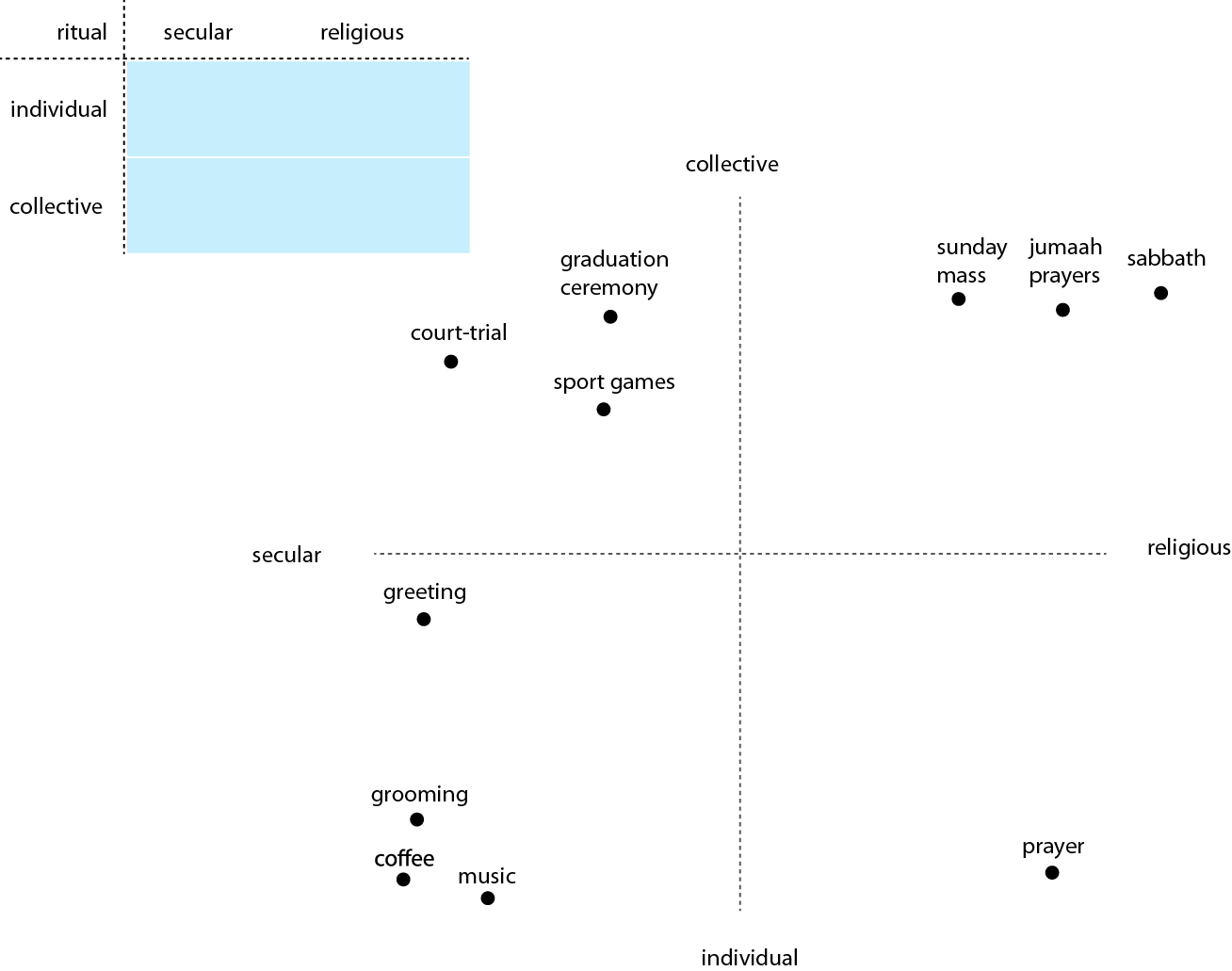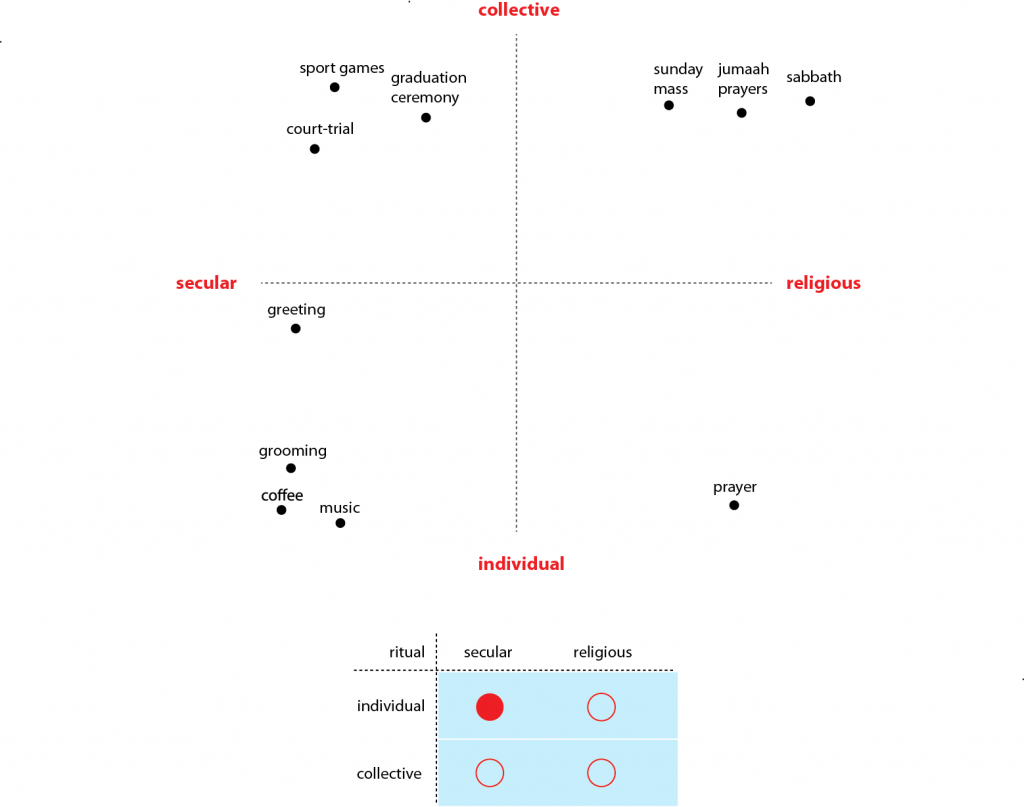What are rituals?
Rituals are actions performed by people that bring higher — and perhaps illogical, magical, and delightful — meaning into their experiences.
Rituals help people to make sense of their life-stages, to construct meaning at personal and societal levels, and to color their rather uneventful ordinary lives. They can take many forms: performed by individuals or by groups, in loud and dramatic scales or small and intimate ones. Rituals often resemble a dramatic staging, with roles, symbols, props, and enactments.
What makes ritual different from any other kind of human behavior? Barbara Myerhoff explains what sets ‘rituals’ apart from the ordinary in her seminal work on secular rituals. It is about marking out special moments, that have meaning, and which the people involved are aware of something special going on.
The most salient characteristic of ritual is its function as a frame. It is a deliberate and artificial demarcation. In ritual, a bit of behavior or interaction, an aspect of social life, a moment in time is selected, stopped, remarked upon.
But this framing is a fiction. Artificial, its very artifice is denied and the claim is made that its meanings “are as they seem,” as presented.
This applies to rituals large and small: the encounters and separations in ordinary human transactions are punctuated by ritual gestures or statements, announcing our agreement on what has occurred — we have met, been amiable disposed to one another, parted with regrets, and so forth. Something of note has occurred.
Rituals gestures announce instrumental activities very often. As such they call the subject’s attention to his undertaking. He is acting with awareness. He has taken the activity out of the ordinary flow of habit and routine, and performed the gestured to arouse in himself a particular attitude, demonstrating that his actions mean more than they seem.
Taken from Barbara G. Myerhoff, “Chapter XI: We don’t wrap herring in a printed page: Fusion, fictions, and continuity in secular ritual,” page 199-200 of the book Secular Ritual — emphasis added by us.
Why is Ritual important for designers?
Rituals are complex experiences as they embody a certain culture, whether it’s individual or social in nature. Understanding this complexity can serve the designer in a multitude of ways.
- Products play a dramatic role in rituals, they act as props for people to perform their rituals.
- Products can be crystallization of a certain emotion, value, or a set of beliefs during a ritual.
- The goal of ritual is to help the person to cultivate meaning from the ordinary. Meaning can be personal, such as self-fulfillment, or social, such as connecting to a cause bigger than herself. In either case, ritual gives a perfect frame for a designer. Ritual is the embodiment of meaning, and products can be an affordance to meaning.
- Why meaning is critical to the designer? Meaning is the currency of a product. If product fails to provide meaning, it lacks its essence and its existence becomes void. The essence of meaning can be practical, emotional, intellectual, or all of them together.
- Products provide stability, and a place to hold on to during the turmoil of life. Rituals are benchmarks for such a stability.
Products shape us as much as — and perhaps more than — we shape them. They help us to grasp and make sense of the real world. Products influence our experiences, either as props or as characters in our lives. We construct meaning based on the mediating power of products.
Ritual design aims to harness this power of products to trigger meaning for humans. We believe that we as designers can create more meaningful products that bring values, deep emotions & spirituality into our experiences.
What are different kinds of rituals?
We created a matrix of ritual with four dimensions, along the spectrum of secular (non-religious) versus religious, and spectrum of individual versus collective. We’ve marked down some examples on the matrix to show the differences in categories.
Ritual traditionally has been studied regarding the collective yet religious contexts. This research initiative aims to open up the space for other types of rituals, especially those that are more everyday and lightweight.


Comments 3
I work in large companies designing change strategies. ..I use performance, music and art rituals to open collective minds and prepare the ground for fertile imaginings.
Pingback: Diseño de Rituales : Diseñando sentido en las experiencias de cada día – – TORONJA OJONA
Pingback: Rite of inhabiting the in between – Mar de Fronteira